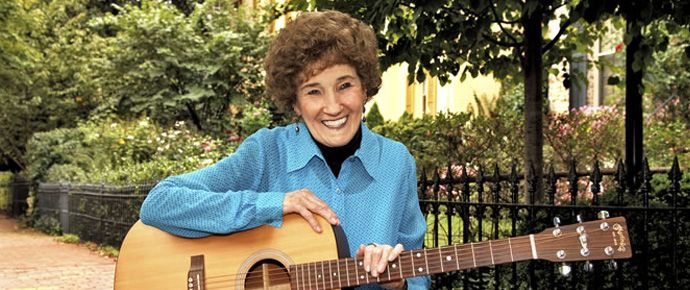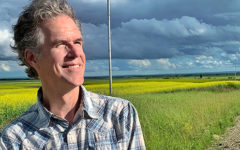
Is this the year bluegrass pioneer Hazel Dickens is inducted into the bluegrass Hall of Fame?
It should be. Then again, last year, she didn’t even make the ballot, a head-scratching development that seems to defy explanation. But just as spring’s buds and blossoms bring new hope, so this spring brings another chance to give the ultimate bluegrass honor to a deserving recipient.
In truth, this year might be Hazel’s best chance for induction since she became eligible. Last year, IBMA’s board of directors voted to allow two inductees in the open category instead of one. And this year, the rotating slot is reserved for early contributors – those whose primary contributions in bluegrass came at least 25 years earlier. (The early contributor slot alternates years with induction of a non-performer). Hazel could qualify for any of the three slots.
To me, the Hall-of-Fame case for Hazel, as a songwriter, performer, band leader and bluegrass pioneer, is crystal clear. As I wrote when she died in April 2011, “No Hazel Dickens singing gritty songs about women and blue-collar workers? It’s very easy to imagine no Alison Krauss, Claire Lynch, Rhonda Vincent or Missy Raines either, at least as band leaders.” (Click here for the rest of the appreciation I wrote when she died.)
But to others, the case is murky. Some bluegrassers have argued that Hazel can’t be considered without her longtime sidekick Alice Gerrard, and they make a case that Hazel and Alice were folkies. Then there’s politics. Hazel was a hardcore liberal to the end.
Noted bluegrass author and historian Fred Bartenstein addressed the Hazel-Alice conundrum in a letter to the nominating committee in March, urging that the committee consider Dickens individually.
“With no disrespect to Alice, Hazel’s accomplishments and influence among generations of artists and fans have been broader and historically more significant,” he wrote.
His letter stated, in part: “Hazel Dickens is the next logical inductee. A notable bluegrass performer and songwriter, she was also an instrumental figure in bridging gaps among class, gender, regional, and ethic groups as bluegrass found new audiences in the 1950s and 1960s.”
To be sure, there are other deserving candidates, each with their own constituencies. But I’m solidly in Hazel’s camp.
The first stage of the nominating process is already finished. According to IBMA Executive Director Paul Schiminger, the nominating committee met recently to select the names that will appear on the ballot – 10 to 15 for each of the three slots. There are 10 members of the nominating committee, appointed by IBMA’s board.
In the next few days, the ballots containing those names will be in the hands of the electors (about 200 folks with extensive experience in the bluegrass world), who are also selected by the board. On the first ballot, the electors will determine five finalists in each category. On the second ballot, the electors will determine the three inductees for 2017.
Those who are selected will be announced when the finalists for IBMA awards are unveiled this summer.







